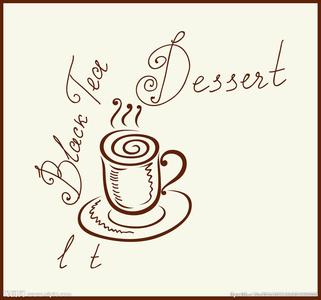Description of the story and flavor of Ethiopian coffee introduction to the taste of varieties produced by regional treatment
Description of the story and flavor of Ethiopian coffee introduction to the taste of varieties produced by regional treatment
There is a small town in southern Ethiopia called Kafa, which is the earliest birthplace of coffee. But now Ethiopia is most famous for coffee beans with trademarks such as Hal, Sidamo and Yega Chefe. In fact, many of Starbucks' raw materials come from these three brands. Ethiopia is now the world's eighth largest coffee exporter, accounting for only 3% of the global coffee trade. Bloggers can just remember that the best and most expensive coffee in the world is Harar coffee.
It's so cheap to have a cup of coffee anywhere in Ethiopia, even in a coffee bar at the Sheraton Hotel, it's only two bills, just one yuan. If bloggers want to buy coffee in Ethiopia and bring it back to China, they can buy it in a coffee store in Addis Ababa. You can choose coffee beans according to the recommendation of the shopkeeper. Of course, you can also ask for a few cups for comparison. After weighing, the shopkeeper will immediately grind the coffee powder for you and provide vacuum packaging for you. The price is generally 30-50Birr (15-25 yuan). The same thing with the Starbucks trademark is estimated to sell for $20 to $40. I bring back some coffee powder from Ethiopia every year, but what I bring back is only shape, but what I can't bring back is the charm of Ethiopian coffee.
The Buna ceremony in Ethiopia is a long process, with an average of about 1.5 hours. The ceremony, which takes place every day, aims to come to the conclusion that it may be a marriage proposal or a mediation of family conflict.
The first is roasted coffee beans. When the coffee beans are roasted, the women (often dressed up) put the coffee beans into the pot and let everyone smell the coffee beans. And then I started making coffee.
The first cup in the ceremony is called ABOL, which is the most important and the worst. If you are resolving a conflict, you must bravely drink this drink and state your point of view.
The second cup is called Tona, boiled again with water, and the taste is still strong. If the other person accepts his or her own point of view, he will drink it up. If the other party doesn't drink, there won't be a third drink.
The third cup is called Baraka, when the matter is settled and the conclusion is satisfactory, it symbolizes joy, and often the younger generation will be invited to this cup.

Important Notice :
前街咖啡 FrontStreet Coffee has moved to new addredd:
FrontStreet Coffee Address: 315,Donghua East Road,GuangZhou
Tel:020 38364473
- Prev

Introduction to the description of taste and flavor of Costa Rican red bourbon coffee beans by grinding scale treatment
Description of taste and flavor of Costa Rican red bourbon coffee beans by grinding and scale treatment Tarrazu in Costa Rica is one of the major coffee producers in the world with a light and pleasant flavor. Costa Rica, with its fertile volcanic soil and good drainage, is the first country in Central America to grow coffee and bananas for commercial value. Coffee
- Next

Brazil South Minas Coffee Flavor description Grinding scale treatment Variety producing area
Brazil South Minas Coffee Flavor description Grinding scale method Coffee varieties originated in Ethiopia, and the French got coffee seeds from Ethiopia and brought them to French Guiana in South America. In 1727, a French immigrant living in Brazil secretly brought the seed to Brazil, first planted in Rio de Janeiro and then gradually extended to Sao Paulo and Minasji.
Related
- Detailed explanation of Jadeite planting Land in Panamanian Jadeite Manor introduction to the grading system of Jadeite competitive bidding, Red bid, Green bid and Rose Summer
- Story of Coffee planting in Brenka region of Costa Rica Stonehenge Manor anaerobic heavy honey treatment of flavor mouth
- What's on the barrel of Blue Mountain Coffee beans?
- Can American coffee also pull flowers? How to use hot American style to pull out a good-looking pattern?
- Can you make a cold extract with coffee beans? What is the right proportion for cold-extracted coffee formula?
- Indonesian PWN Gold Mandrine Coffee Origin Features Flavor How to Chong? Mandolin coffee is American.
- A brief introduction to the flavor characteristics of Brazilian yellow bourbon coffee beans
- What is the effect of different water quality on the flavor of cold-extracted coffee? What kind of water is best for brewing coffee?
- Why do you think of Rose Summer whenever you mention Panamanian coffee?
- Introduction to the characteristics of authentic blue mountain coffee bean producing areas? What is the CIB Coffee Authority in Jamaica?

